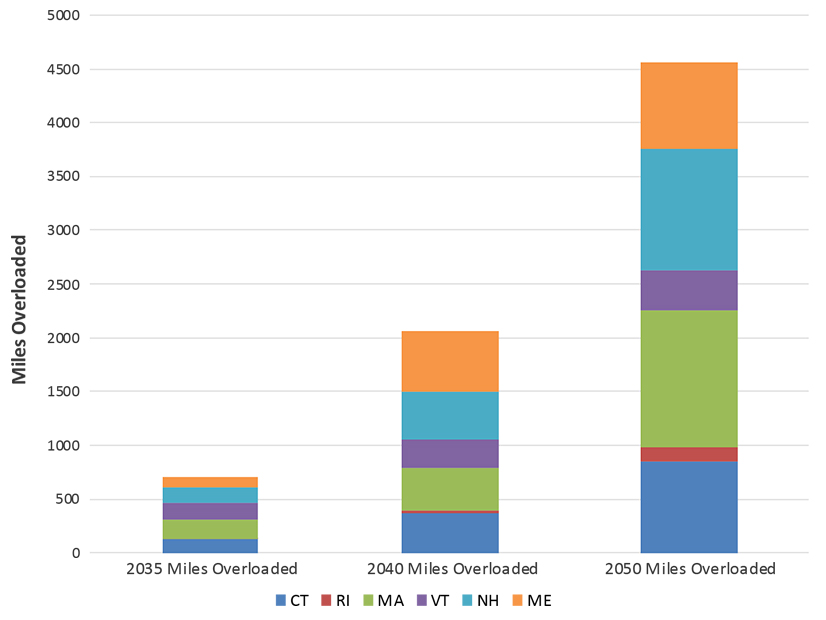
Multiple “paradigm shifts” in the way New England produces and consumes energy could lead to thousands of miles of overloaded transmission lines, according to the preliminary results of ISO-NE’s 2050 Transmission Study.
The study, initiated by the grid operator in response to a request from the New England States Committee on Electricity for longer-term transmission planning, was designed to examine the next few decades as the region continues to ramp up its decarbonization efforts.
It found that as the region moves from a summer-peaking area to winter-peaking, increases its use of renewables and doubles peak power consumption, about half of its 9,000 miles of lines could be overloaded.
“Significant new transmission will be needed to reliably serve load under the assumptions analyzed in this study,” ISO-NE said in its presentation to the Planning Advisory Committee on Wednesday.
The most challenging scenario is the 2050 winter peak, in which overloads are caused primarily by high heating load and a shortfall in supply requires new resources.
Regional discrepancies also pop up in the study. “The paths between north and south would need significant upgrades to transfer surplus generation in Northern NE to generation-deficient Southern NE,” ISO-NE said. Other possible solutions include relocating large amounts of generation from north to south or putting more offshore wind in the southern part of the region.
The RTO is planning to perform further analysis to determine if summer-only overloads can be solved by different solar resource distributions, and to develop possible transmission solutions.
